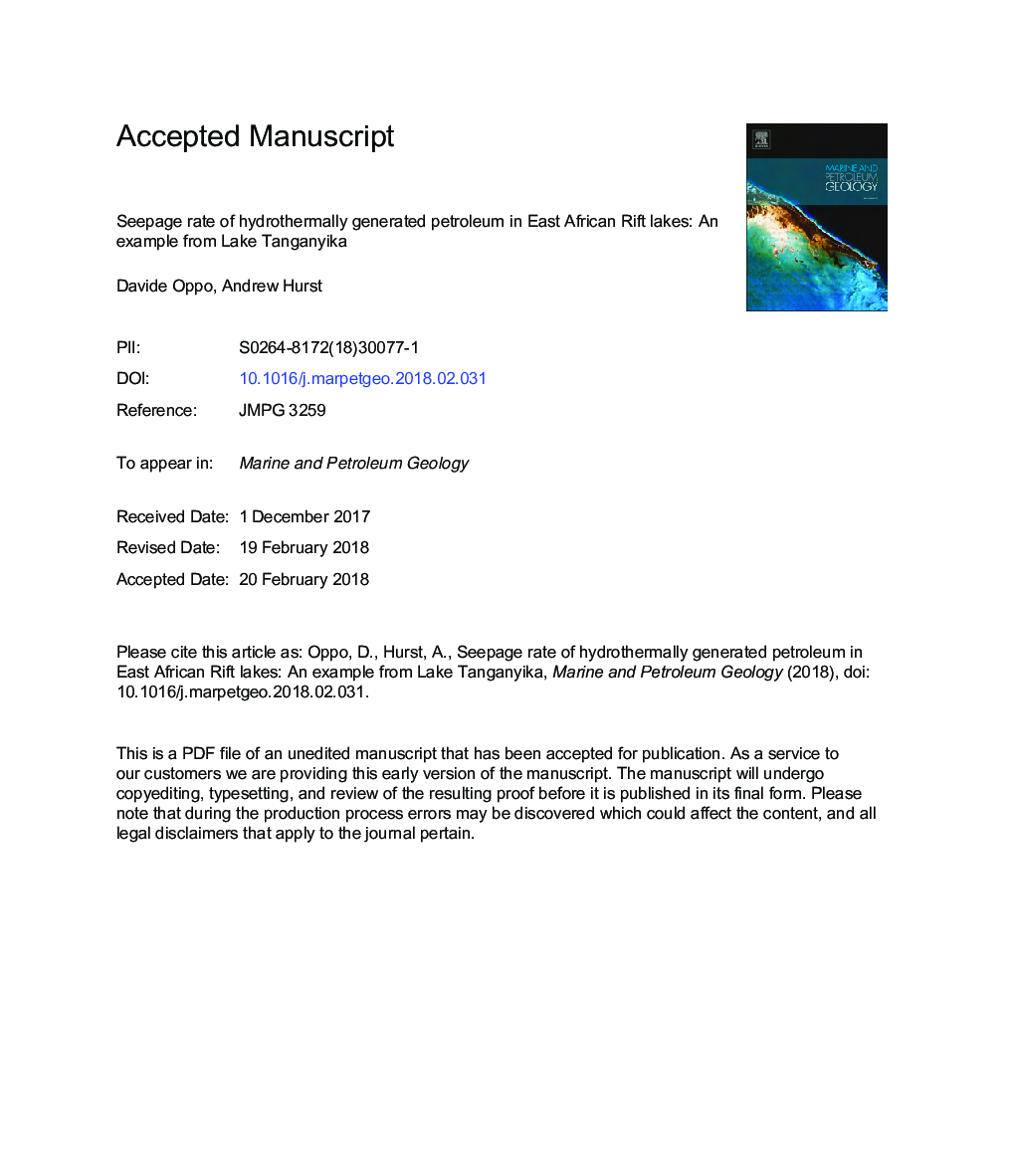| Article ID | Journal | Published Year | Pages | File Type |
|---|---|---|---|---|
| 8909107 | Marine and Petroleum Geology | 2018 | 23 Pages |
Abstract
Synthetic Aperture Radar images provide temporal coverage of the oil seepage recurrence at Cape Kalumba, Lake Tanganyika. In combination with legacy seismic data, it has been possible to reconstruct the geological context that regulates seepage and estimate the oil seepage rates. Oil seepage is along fractures associated with the East Ubwari Faults, which in turn promote an active hydrothermal system that matures very shallow (10's m below the lake floor) oil-prone, less than 25 kyr old source rocks. Temporally consistent oil slick origin points are preferentially aligned E-W and SE-NW, and feed oil slicks on the lake surface. Pervasive seeps activity with significant emission rates, up to 449.39â¯m3â¯y-1, proves the presence of high-quality oil-prone source rocks and an active petroleum system that emits oil to form slicks. Hydrothermally-driven source rock maturation occurring at very shallow depth creates a narrow depth-window for conventional trapping of oil. Elsewhere in the lakes of the East African Rift, where similar hydrothermal systems occur, oil slicks may only be indicative of active petroleum systems without the presence of conventional traps.
Related Topics
Physical Sciences and Engineering
Earth and Planetary Sciences
Economic Geology
Authors
Davide Oppo, Andrew Hurst,
